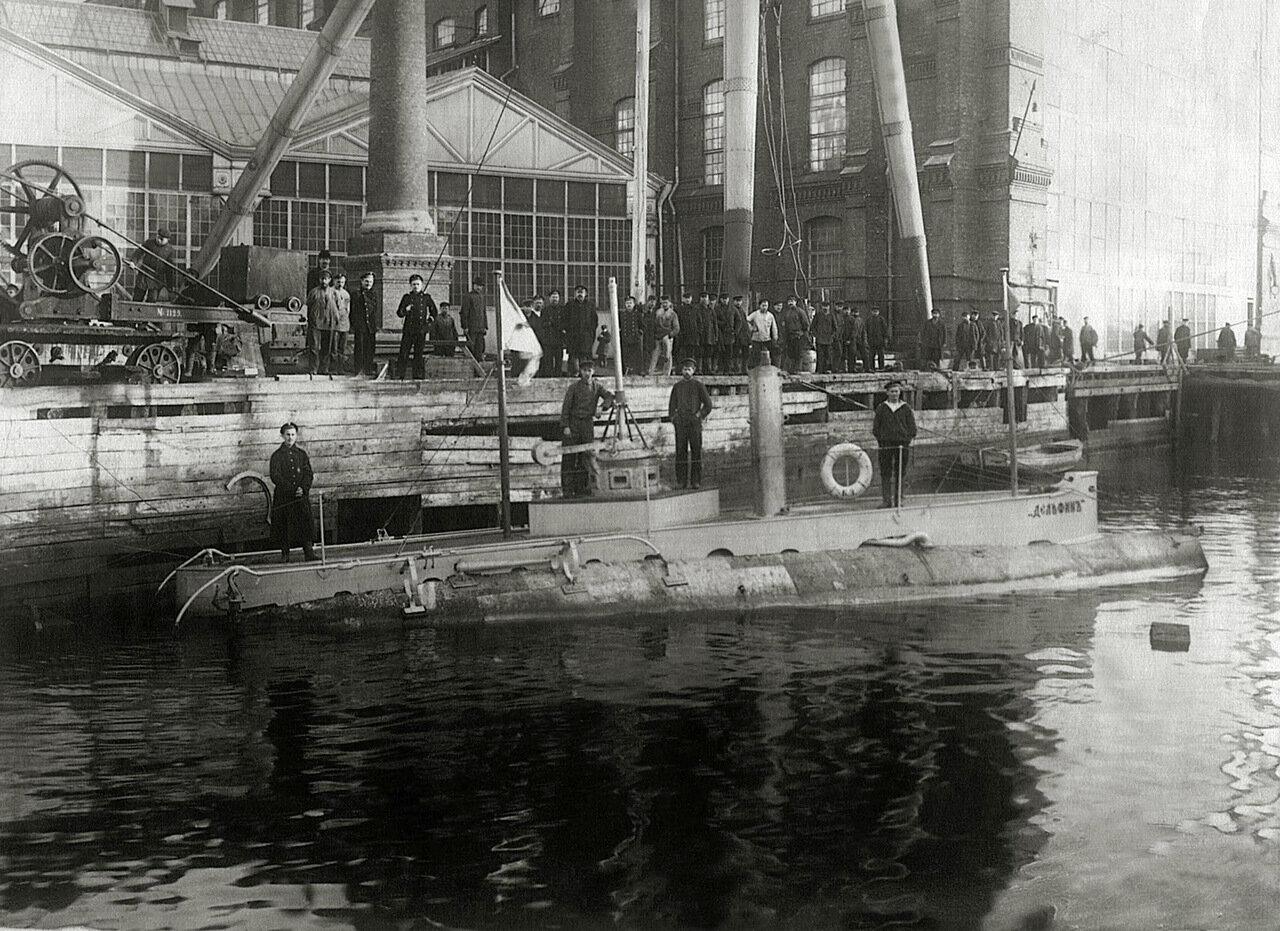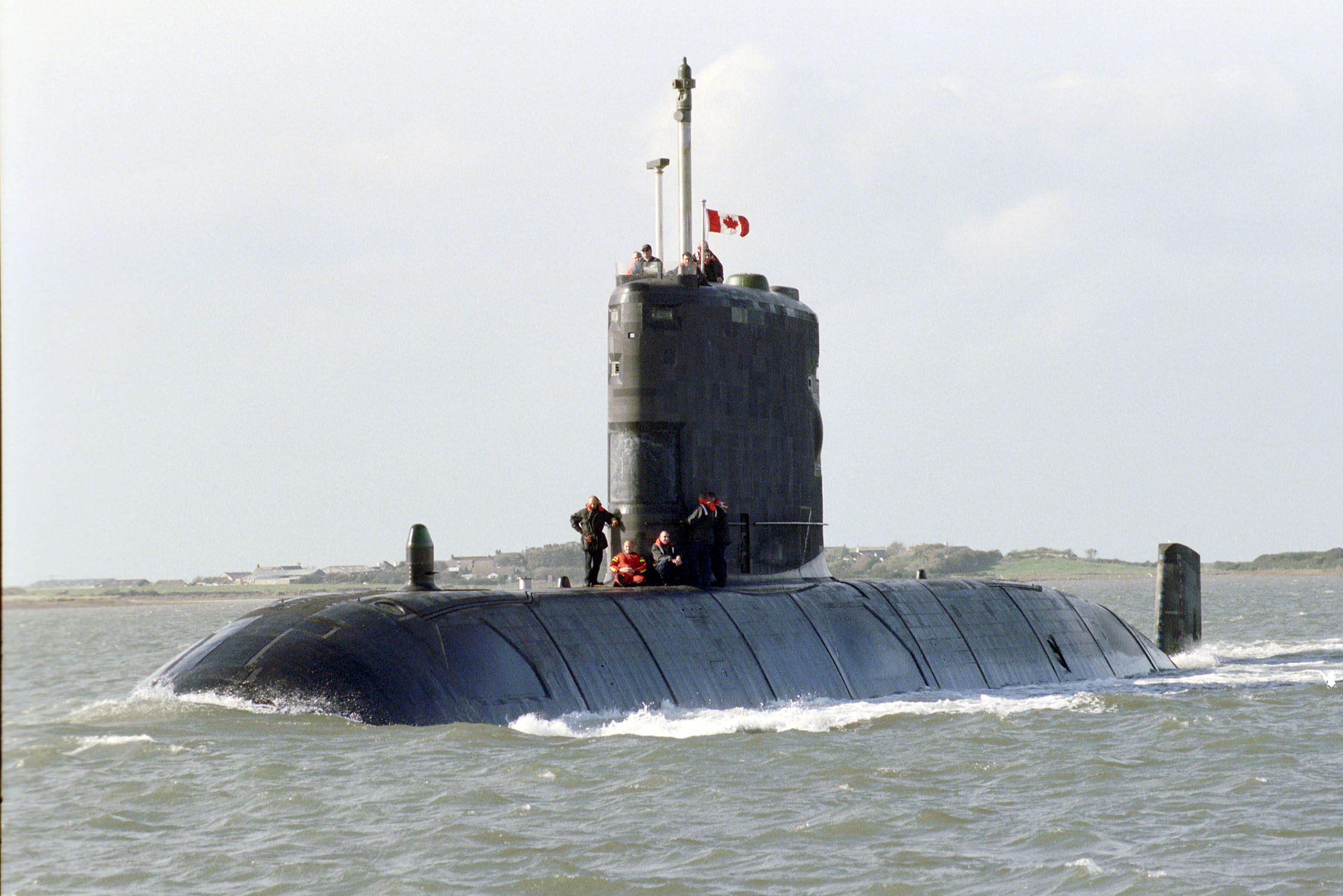|
Project Kalina
Project Kalina is a proposed fifth-generation diesel-electric submarine currently being developed by TsKB Rubin and others, for the Russian Navy. It will be fitted with air-independent propulsion technology, and copies may also be sold to China. As of 2021, the project had lost government funding, according to the Russian state-owned RIA Novosti news agency. As a result, it was being self-funded by Rubin, the developer. See also * List of Soviet and Russian submarine classes * Future of the Russian Navy * Cruise missile submarine * Attack submarine An attack submarine or hunter-killer submarine is a submarine specifically designed for the purpose of attacking and sinking other submarines, surface combatants and merchant vessels. In the Soviet and Russian navies they were and are called ... References {{Soviet and Russian submarines after 1945 Russian and Soviet navy submarine classes Attack submarines ... [...More Info...] [...Related Items...] OR: [Wikipedia] [Google] [Baidu] |
Rubin Design Bureau
Rubin Central Design Bureau for Marine Engineering (Russian: Центральное конструкторское бюро "Рубин", shortened to ЦКБ "Рубин") in Saint Petersburg is one of three main Russian centers of submarine design, and the other two are Malakhit Marine Engineering Bureau and Lazurit Central Design Bureau ("Lazurit" is the Russian word for lazurite). Rubin is the largest among the three Soviet/Russian submarine designer centers, having designed more than two-thirds of all nuclear submarines in the Russian Navy. "Rubin" (russian: Рубин) is the Russian word for ruby. History Early history On January 4, 1901 the Marine Ministry of Russia assigned the task of designing a combat submarine for the Russian Navy to three officers: Lieutenant M.N. Beklemishev, Lieutenant I.S. Goryunov and naval architect Senior Assistant I.G. Bubnov, an employee at the Ministry's Baltic Shipyard where the construction of the vessel was planned to take place. The men ... [...More Info...] [...Related Items...] OR: [Wikipedia] [Google] [Baidu] |
Sevmash
JSC PO Sevmash ( rus, ОАО «ПО „Севмаш“», Севмаш, СМПСМП, "Severodvinsk Machine Building Plant") is a Russian joint-stock company (JSC) under the vertically-integrated United Shipbuilding Corporation. The shipbuilding operations of Sevmash is in the port city of Severodvinsk on the White Sea in the Russian Federation. "Sevmash" is an abbreviation of ''Severnoye Mashinostroitelnoye Predpriyatie'' (Северное Машиностроительное Предприятие), i.e. "Northern Machine-Building Enterprise". Sevmash is the largest shipbuilding enterprise in Russia and today the country's only nuclear submarine producer. In 2009, the company employed 26,951 people and its revenue from military production was $533.02 million. Military production The shipyard's main specialization is manufacturing of ships, submarines and military equipment for the Russian Navy. Sevmash is the only shipyard in Russia producing nuclear submarines. , the l ... [...More Info...] [...Related Items...] OR: [Wikipedia] [Google] [Baidu] |
Attack Submarine
An attack submarine or hunter-killer submarine is a submarine specifically designed for the purpose of attacking and sinking other submarines, surface combatants and merchant vessels. In the Soviet and Russian navies they were and are called "multi-purpose submarines". They are also used to protect friendly surface combatants and missile submarines. Some attack subs are also armed with cruise missiles, increasing the scope of their potential missions to include land targets. Attack submarines may be either nuclear-powered or diesel-electric ("conventionally") powered. In the United States Navy naming system, and in the equivalent NATO system (STANAG 1166), nuclear-powered attack submarines are known as SSNs and their anti-submarine (ASW) diesel-electric predecessors are SSKs. In the US Navy, SSNs are unofficially called "fast attacks". History Origins During World War II, submarines that fulfilled the offensive surface attack role were termed fleet submarines in the U.S. Nav ... [...More Info...] [...Related Items...] OR: [Wikipedia] [Google] [Baidu] |
Diesel-electric Submarine
A submarine (or sub) is a watercraft capable of independent operation underwater. It differs from a submersible, which has more limited underwater capability. The term is also sometimes used historically or colloquially to refer to remotely operated vehicles and robots, as well as medium-sized or smaller vessels, such as the midget submarine and the wet sub. Submarines are referred to as ''boats'' rather than ''ships'' irrespective of their size. Although experimental submarines had been built earlier, submarine design took off during the 19th century, and they were adopted by several navies. They were first widely used during World War I (1914–1918), and are now used in many navies, large and small. Military uses include attacking enemy surface ships (merchant and military) or other submarines, and for aircraft carrier protection, blockade running, nuclear deterrence, reconnaissance, conventional land attack (for example, using a cruise missile), and covert insertion of spe ... [...More Info...] [...Related Items...] OR: [Wikipedia] [Google] [Baidu] |
TsKB Rubin
Rubin Central Design Bureau for Marine Engineering (Russian: Центральное конструкторское бюро "Рубин", shortened to ЦКБ "Рубин") in Saint Petersburg is one of three main Russian centers of submarine design, and the other two are Malakhit Marine Engineering Bureau and Lazurit Central Design Bureau ("Lazurit" is the Russian word for lazurite). Rubin is the largest among the three Soviet/Russian submarine designer centers, having designed more than two-thirds of all nuclear submarines in the Russian Navy. "Rubin" (russian: Рубин) is the Russian word for ruby. History Early history On January 4, 1901 the Marine Ministry of Russia assigned the task of designing a combat submarine for the Russian Navy to three officers: Lieutenant M.N. Beklemishev, Lieutenant I.S. Goryunov and naval architect Senior Assistant I.G. Bubnov, an employee at the Ministry's Baltic Shipyard where the construction of the vessel was planned to take place. The men ... [...More Info...] [...Related Items...] OR: [Wikipedia] [Google] [Baidu] |
Air-independent Propulsion
Air-independent propulsion (AIP), or air-independent power, is any marine propulsion technology that allows a non-nuclear submarine to operate without access to atmospheric oxygen (by surfacing or using a snorkel). AIP can augment or replace the diesel-electric propulsion system of non-nuclear vessels. Modern non-nuclear submarines are potentially stealthier than nuclear submarines; although some modern submarine reactors are designed to rely on natural circulation, most naval nuclear reactors use pumps to constantly circulate the reactor coolant, generating some amount of detectable noise. Non-nuclear submarines running on battery power or AIP, on the other hand, can be virtually silent. While nuclear-powered designs still dominate in submergence times, speed, range and deep-ocean performance; small, high-tech non-nuclear attack submarines can be highly effective in coastal operations and pose a significant threat to less-stealthy and less-maneuverable nuclear submarines. AIP ... [...More Info...] [...Related Items...] OR: [Wikipedia] [Google] [Baidu] |
RIA Novosti
RIA Novosti (russian: РИА Новости), sometimes referred to as RIAN () or RIA (russian: РИА, label=none) is a Russian state-owned domestic news agency. On 9 December 2013 by a decree of Vladimir Putin it was liquidated and its assets and workforce were transferred to the newly created Rossiya Segodnya agency. On 8 April 2014 RIA Novosti was registered as part of the new agency. RIA Novosti is headquartered in Moscow. The chief editor is Anna Gavrilova. Content RIA Novosti was scheduled to be closed down in 2014; starting in March 2014, staff were informed that they had the option of transferring their contracts to Rossiya Segodnya or sign a redundancy contract. On 10 November 2014, Rossiya Segodnya launched the Sputnik multimedia platform as the international replacement of RIA Novosti and Voice of Russia. Within Russia itself, however, Rossiya Segodnya continues to operate its Russian language news service under the name RIA Novosti with its ria.ru website. T ... [...More Info...] [...Related Items...] OR: [Wikipedia] [Google] [Baidu] |
List Of Soviet And Russian Submarine Classes
Submarines of the Soviet Navy were developed by numbered "projects", which were sometimes but not always given names. During the Cold War, NATO nations referred to these classes by NATO reporting names, based on intelligence data, which did not always correspond with the projects. See: * List of NATO reporting names for ballistic missile submarines * List of NATO reporting names for guided missile submarines * List of NATO reporting names for hunter-killer and experimental submarines The NATO reporting names were based on the British (and later American) habit of naming submarines with a letter of the alphabet indicating the class, followed by a serial number of that class. The names are the radiotelephonic alphabet call sign of a letter of the alphabet. For security purposes, the "pennant numbers" of Soviet submarines were not sequential, any more than those of Soviet surface vessels were. Most Russian (and Soviet) submarines had no "personal" name, but were only known by a ... [...More Info...] [...Related Items...] OR: [Wikipedia] [Google] [Baidu] |
Future Of The Russian Navy
Following the dissolution of the Soviet Union at the end of 1991, the Russian Navy struggled to adjust Cold War force structures while suffering severely with insufficient maintenance and a lack of funding. However, improvements in the Russian economy over the first decade of the twenty-first century led to a significant rise in defence expenditure and an increase in the number of ships under construction (with a focus on blue-water vessels). An extensive rearmament program was implemented after 2011, with the Russian Defence Ministry expected to procure 100 warships by 2020. In early 2013 it was reported that the navy was to receive 54 new warships of various classes plus 24 submarines by 2020. A report by the US Navy's Office of Naval Intelligence issued in December 2015 provided descriptions and timelines for the construction of a modern 21st century Russian Navy. Some of these plans were modified over the course of the decade with delays pushing back the procurement of major ... [...More Info...] [...Related Items...] OR: [Wikipedia] [Google] [Baidu] |
Cruise Missile Submarine
A cruise missile submarine is a submarine that carries and launches cruise missiles (SLCMs and anti-ship missiles) as its primary armament. Missiles greatly enhance a vessel's ability to attack surface combatants and strike land targets, and although torpedoes are a more stealthy option, missiles give a much longer stand-off range, as well as the ability to engage multiple targets on different headings at the same time. Many cruise missile submarines retain the capability to deploy nuclear warheads on their missiles, but they are considered distinct from ballistic missile submarines due to the substantial differences between the two weapons systems' characteristics. Originally early designs of cruise missile submarines had to surface to launch their missiles, while later designs could do so underwater via dedicated vertical launching system (VLS) tubes. Many modern attack submarines can launch cruise missiles (and dedicated anti-ship missiles) from their torpedo tubes while some ... [...More Info...] [...Related Items...] OR: [Wikipedia] [Google] [Baidu] |
Russian And Soviet Navy Submarine Classes
Russian(s) refers to anything related to Russia, including: *Russians (, ''russkiye''), an ethnic group of the East Slavic peoples, primarily living in Russia and neighboring countries *Rossiyane (), Russian language term for all citizens and people of Russia, regardless of ethnicity *Russophone, Russian-speaking person (, ''russkogovoryashchy'', ''russkoyazychny'') *Russian language, the most widely spoken of the Slavic languages *Russian alphabet *Russian cuisine *Russian culture *Russian studies Russian may also refer to: *Russian dressing *''The Russians'', a book by Hedrick Smith *Russian (comics), fictional Marvel Comics supervillain from ''The Punisher'' series *Russian (solitaire), a card game * "Russians" (song), from the album ''The Dream of the Blue Turtles'' by Sting *"Russian", from the album ''Tubular Bells 2003'' by Mike Oldfield *"Russian", from the album '' '' by Caravan Palace *Nik Russian, the perpetrator of a con committed in 2002 *The South African name for a ... [...More Info...] [...Related Items...] OR: [Wikipedia] [Google] [Baidu] |








_Boat_Enh.jpg)